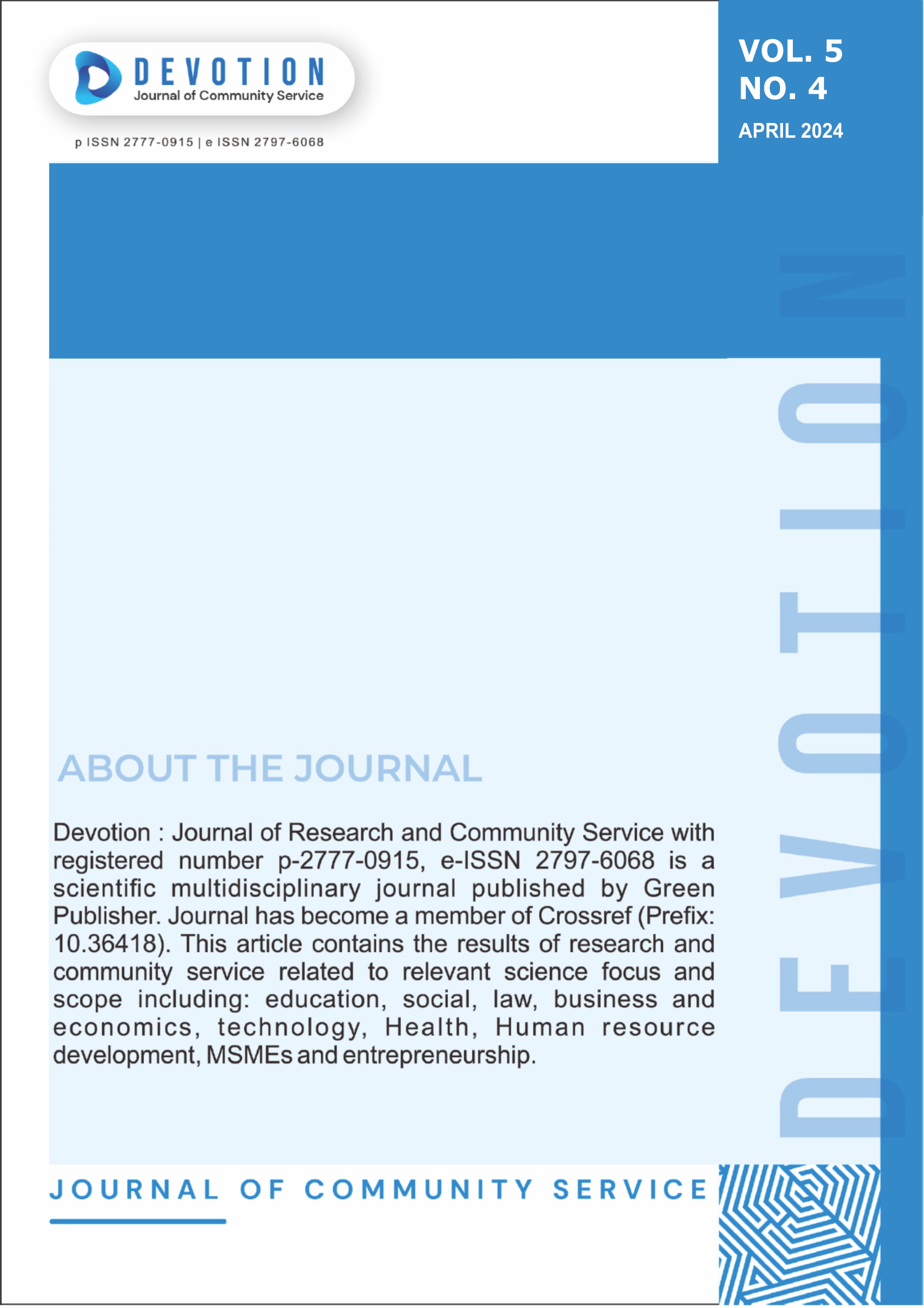Alternative Solutions to Increase Pension Security Participation in Indonesia
DOI:
https://doi.org/10.59188/devotion.v5i4.711Keywords:
pension security, public policy, population agingAbstract
This study aims to analyze alternative solutions to increase the number of pension security participation in Indonesia. The analysis method used in this study is Panel Data Regression. The data used in the panel data analysis are Number of Pension Security Participants, Human Development Index (HDI), Gross Regional Domestic Product (GRDP), Open Unemployment Rate (TPT), Information and Communication Technology Development Index (IPTIK), Young age (15-24) who are not in school, working or training (NEET), Proportion of Average Hourly Wages to Provincial Minimum Wage (Wages), Gini Ratio, Labor Force Participation Rate (TPAK) from 2017-2022 in 33 Provinces in Indonesia. The results of panel data processing, the best model is the Fixed Effect Model with regression results showing that only GRDP variables have a significant positive influence. While the Wage variable has a significant negative effect and the IPM, TPT, IPTIK, NEET, Gini Ratio, TPAK variables have no influence on the Number of Pension Security Participants.
Downloads
Published
Issue
Section
License
Copyright (c) 2024 Astrid Meutia, Muhammad Zilal Hamzah, Haiyani Rumondang

This work is licensed under a Creative Commons Attribution-ShareAlike 4.0 International License.
Authors who publish with this journal agree to the following terms:
- Authors retain copyright and grant the journal right of first publication with the work simultaneously licensed under a Creative Commons Attribution-ShareAlike 4.0 International. that allows others to share the work with an acknowledgement of the work's authorship and initial publication in this journal.
- Authors are able to enter into separate, additional contractual arrangements for the non-exclusive distribution of the journal's published version of the work (e.g., post it to an institutional repository or publish it in a book), with an acknowledgement of its initial publication in this journal.
- Authors are permitted and encouraged to post their work online (e.g., in institutional repositories or on their website) prior to and during the submission process, as it can lead to productive exchanges, as well as earlier and greater citation of published work.













